As children, we were taught about the seven wonders of the world. From Machu Picchu in Peru to the Taj Mahal in India. But did you know that the Great Pyramid of Giza in Egypt was given honorary status? This was built as a tomb for an Egyptian Paharoh, Khufu. This led me to the most infamous Egyptian pharaoh known to most of us - King Tutankhamun.
About King Tut:
King Tutankhamun, or simply known as King Tut, was the son of Akhenaten. He was also the last of royal descent to rule the kingdom from 1333-23 BCE. Although his reign is different from one account to another, he took the throne at the age of nine and died at nineteen. He was originally named as the Tutankhamun by his father. After his father's death, he changed it to Tutankhamun. Tutankhamen translates to "Living image of Athens" and Tutankhamen means "Living image of Amun".
King Tut was married to his half-sister Anhesenamun. During the marriage, they lost two daughters. Both King Tut and Anhesenamun changed their name to their present one. Anhesenamun was originally named Ankhesenpaaten.
The lesser-known royal names of the boy king:
Tutankhamun was not the name his people took up. Like the previous rulers of Egypt, he also had five royal names:
1) Horus name - Picture of births
2) Two Ladies Names - Beautiful of laws that oppress the two countries
3) Golden Horus Name - Elevated in appearance of the god.
4) Phenomena - Nebkheperure
5) Nomen - Tutkhamun
Previous pharaoh:
Akhenaten was the previous Egyptian king who ruled for about 17 years. He was the tenth and penultimate ruler of the royal family. He was known for introducing Athenism and was monotheistic. The religion revolved mainly around Athens, the sun god. Athens was treated as the supreme god. This new religious system replaced the religion of Ancient Egypt. He was also responsible for the destruction of shrines dedicated to various gods other than Athens. He even placed Athens over Amun, the King of God. Many Egyptologists believe that he was the first to introduce a monotheistic religion.
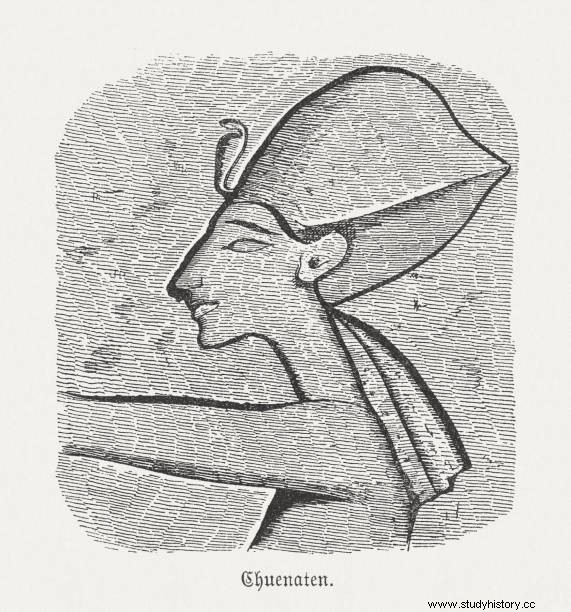
Although the exact date of their wedding is unclear, he was married to Nefertiti. Some sources suggest that he married her shortly after taking the throne. His second wife is Kiya, known from engravings, is believed to be the mother of Tutankhamun. From the inscriptions it can be said that he has seven to eight children. Among them are six of them daughters. Ankhesenpaaten, one of his daughters, later became the queen through her marriage to Tutankhamun. After King Tut ascended the throne, he reconstructed all the destroyed temples.
Reign as ruler
King Tut was made ruler at the age of nine, and took the throne name Nebkheperure. He shared the position, Vizier in Lower and Upper Egypt. Vizier is the highest record to serve the king. As soon as he became a pharaoh, Tut moved his father's mother from his grave. Which was reburied in the Valley of the Kings. This action strengthened his rule as king.
During his time as Pharaoh, Tut took back the worship of Amun and restored Thebes as the religious capital. With this he also changed the end of his name to reflect his royal devotion. Thus, Akhenaten's reform effectively reverses the beginning of his reign. After taking the crown, he gave funds to revive the cults of Amun and Ptah. He ordered that new statues of deities be made with the best and most refined materials. He also had priests, dancers, singers and accompanying positions reintroduced. At the same time, he assured them royal protection for future stability.
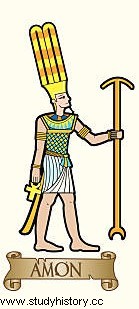
In his second year as Pharaoh, he and his wife both removed 'Athens' from their names. They replaced it with Amun. He transformed the Egyptian religion into polytheistic from monotheistic. He also rebuilt the temples and buildings of Karnak. With this he began the restoration of the temples of Egypt that were torn down by his father.
This is a picture of Amun, Egyptian god (Image credit:Pixabay)
Additional actions as king
Under Akhenaton's rule, the country became economically weak. To add to this, their diplomatic relations also bottomed out. This was sorted out by Tutankhamun and brought the country back to its feet. In his grave you can find gifts from different kingdoms. This serves as proof that he was successful in the mission. Despite his efforts to improve relations, he was still at war with few countries. Battles with Nubians and Asians were documented in his mortuary in Thebes.
Since Tut had taken on the role of king at a relatively young age, he had advisers. Among his advisers were Ay and his supposed son-in-law Horemheb's successors. It was also believed that Ay played a crucial role in Tutankhamun's remarkable reign. King Tut managed to bring back the ancient Egyptian religion under the guidance of Ay.
Find King Tutankhamun's Tomb
Although he was able to restore the ancient Egyptian religion, he was barely known. His remarkable efforts were overshadowed by his successors. It was when a British archaeologist discovered his tomb that he became known to the modern world. Howard Carter found Pharaoh's tomb in 1922 which was closed for almost 3200 years. Despite his status, his tomb was buried by an unusually small tomb.
Around the time of Tutankhamun's death, the construction of the great royal tomb took place. And also, his death was unexpected, so his mother was buried in a grave intended for someone else. The tomb was found under many cottages built during the Ramesside period. This was the reason why the tomb, unlike many others, was not robbed so much. Despite Carter's discovery, the tomb was robbed at least twice. However, the loot that was robbed was perishable oils and perfumes. This shows that the robberies took place only a few months after the funeral. The doors on the outside were not sealed. While the doors of the two inner shrines were locked.
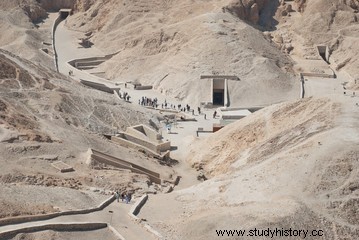
Inside his grave
The king's body lay in three mummy-shaped coffins. While the inner part consists of pure gold and the outer part was made of slipped wood. King Tut's mummy was covered with a gold mask. This mask was made of gold with few gems, obsidian and turquoise. The total weight of this mask is 11 kg. In his grave, they discovered more than 5,000 objects. This assumed the audience's interest in ancient Egypt. These various treasures were meant to accompany King Tut in his afterlife. All artifacts and treasures clearly showed ancient royal life in Egypt.
The treasury in the side room of the burial chamber had an unlocked doorway. This made access to the treasury easier. It contained 5,398 XNUMX items and it took ten years before Carter recorded everything. The gold chest, face mask was found. Add to this, thrones, archery bows, furniture, food, wine, sandals and fresh bedding lingerie were also found. It had mummies of two fetuses, and with DNA testing, it was found to be his stillborn child. The large statue of Anubis and King Tuts intricate canopy breasts was also unveiled. These objects were the largest found in the room.
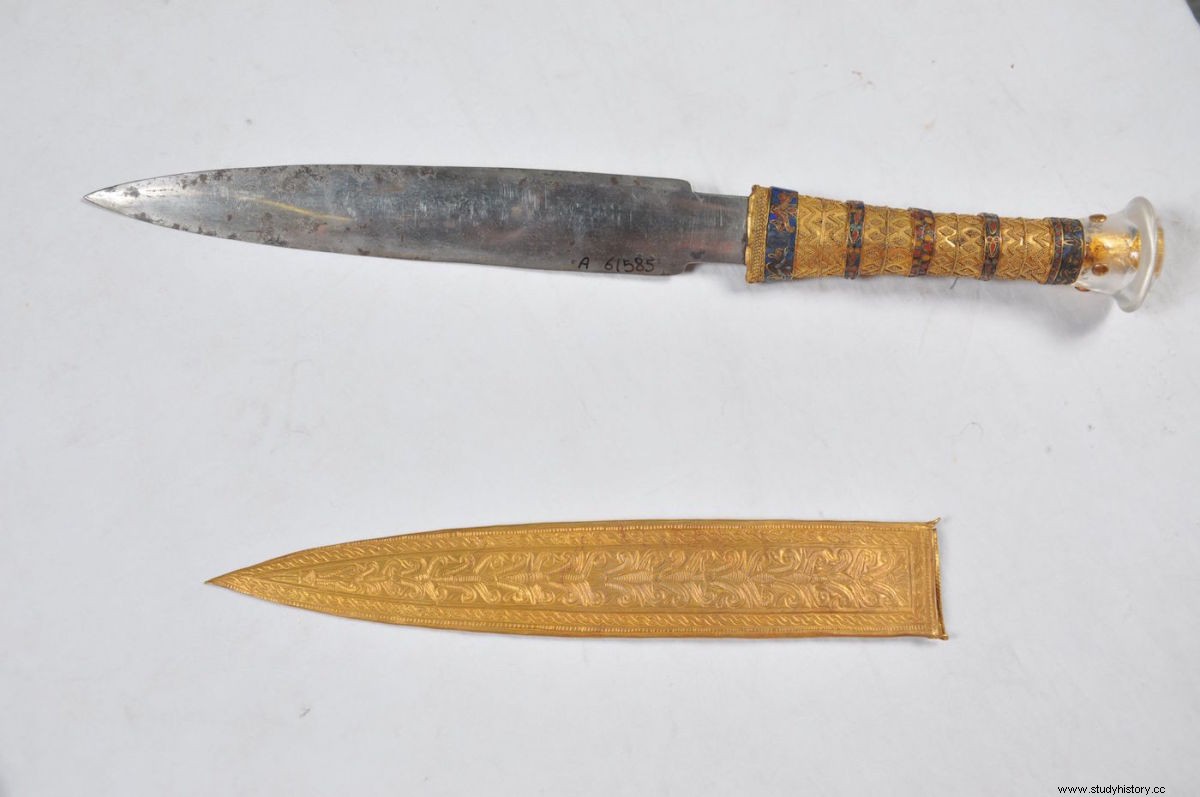
A meteoric iron dagger was also found in his grave. Since the dagger closely correlates to meteoric composition, it is assumed to have meteorite origin. The current location of the dagger is at the Egyptian Museum in Cario.
Iron dagger by King Tut (Image credit:History)
His physical health
From the mother, King Tutankhamun's health, physique, the possible cause of death was death was determined. It revealed him to be around 167 cm, which is 5'6. It has been theorized that he suffered from several ailments. He had a disease like Marfan syndrome, adiposogenital dystrophy to name a few.
In 2005, January, his mummy was CT-scanned. It was found that he had a mild case of scoliosis. His right foot was flat and his left foot was clothed. This made him use a cane to walk. These sticks were found in his grave. Further testing revealed that he was infected with malaria. He was often infected with the most serious form of malaria. This may have caused either a triggered circulatory shock or a fatal immune reaction in the body.
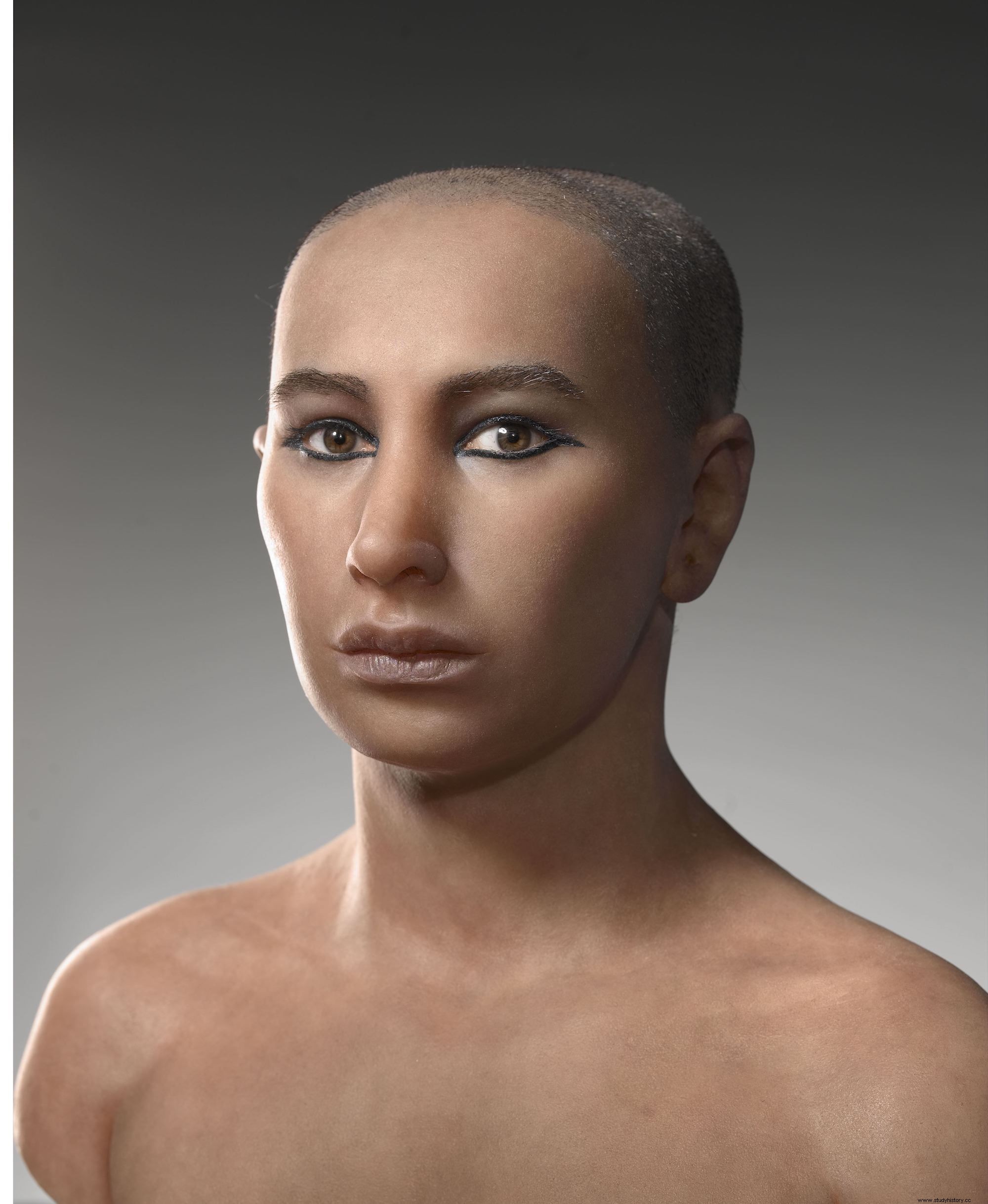
The first facial reconstructions showed a handsome young man. But with today's high-tech 3D imagery and theories, mistakes were proven. The boy king had distorted his hips. He also suffered from epilepsy. His legs were lame and he had to use a cane, as mentioned earlier. It is believed that since his parents were siblings, this may explain his various physical health problems. It was not uncommon to practice incest in ancient Egypt.
Theories about his death
Murder conspiracy
Arthur Mace, Crater's assistant, put forward the theory of assassination. He suggested that Ay, King Tut's successor, could have killed him. The motive may be Ay's desire to become a pharaoh himself. Although rare, there are no unusual attacks on Egyptian kings. An X-ray of his skull showed a loose bone fragment there. It is believed to be evidence that showed that the cause of his death was due to a blow to the head. Through further analysis, this turned out to be wrong. This led to the theory being rejected.
Accident
Six wagons were found in Tutankhamun's tomb. These were used for battles and hunting in ancient Egypt. Some believe he died in a car accident. In 2006, Dr. Zahi Hawass, an Egyptian archaeologist, found evidence to support this theory. He found that King Tut's left femur broke around the time of death. In addition to this, he had broken ribs and his chest was hollowed out. However, he was already suffering from various ailments. These may have caused his death. Nevertheless, this theory had some possibility.
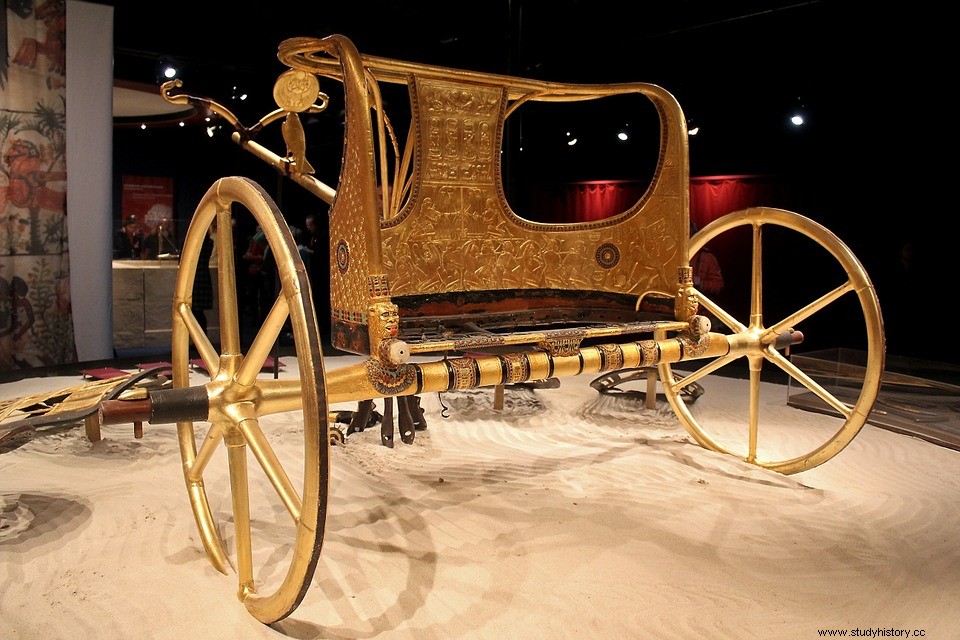
Illness
It was initially thought that he died of tuberculosis. But an X-ray ruled out this possibility. Dr. Zahi suggested that Tut's parents were either siblings or cousins. This increased the chance that he inherited genetic disorders. In 2014, Dr. Hutan suggested that he may have died of familial temporal lobe epilepsy. He assumed that many pharaohs had feminine physics. Along with this, they found objects that showed the same thing. This condition can affect hormone levels, and leaving it untreated is a high risk. But it seemed like he did it and increased the risk of getting a pass that could lead to fatal injury. This theory also has some viability.
Pharaoh's Curse
The "curse of Pharaoh" or the curse of the mummy is a curse that is thrown on everyone who disturbs the mummies of ancient Egypt, mainly pharaohs. It is believed that this curse can lead to bad luck, disease or even death, and that it does not separate thieves and archaeologists. After Howard Carter's discovery of Tutankhamun's tomb, this curse became popular. Although many deaths have been linked to this curse, errors were found. Studies show that those who went in lived as long as their peers.
Lord Carnarvon, who financed the excavations, died four months after Tut's tomb was discovered. It must be noted that he was also the first to enter the tomb. This led many journalists to theorize "Pharaoh's curse". They theorized that hieroglyphs on the walls could cause the death of those who disturb King Tutankhamun's tomb. Despite the misunderstandings, no curse was written in his grave. Of 58 people, only eight are dead. Others have lived long and healthy lives.
Current location of his tomb and artifacts
The tomb is located in the Valley of the Kings and is open to the public. In addition to the admission fee, an extra amount will be charged. To preserve and manage the tomb, a project was carried out by the Getty Conservation Institute.
Most of the artifacts are in an Egyptian museum in Cario. It was in the 1960s, it was exhibited from Egypt. The artefacts from his tomb are one of the most erected artefacts in the world. Exhibitions of relics found at Tutankhamun's tomb were held in museums in Canada, Japan, France and so on. It must be noted that Tut became famous because of his almost intact tomb and artifacts. The first exhibition was held in 1962 in Algeria.
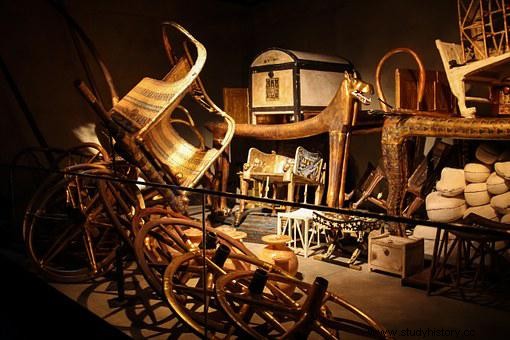
Successor of Tut, pharaoh Ay
Since Tutankhamun had no heirs, he ended up being the last of the royal family to rule Egypt. After his death, Ay took the throne. Furthermore, there is also evidence that he performed the last rituals for Tut. Ay ruled Egypt for only four years. He was overthrown by Horemheb, his supposed son-in-law. Due to his short reign, records and monuments credited to him are rare. In addition, he was overthrown due to the campaign started by Horemheb.
